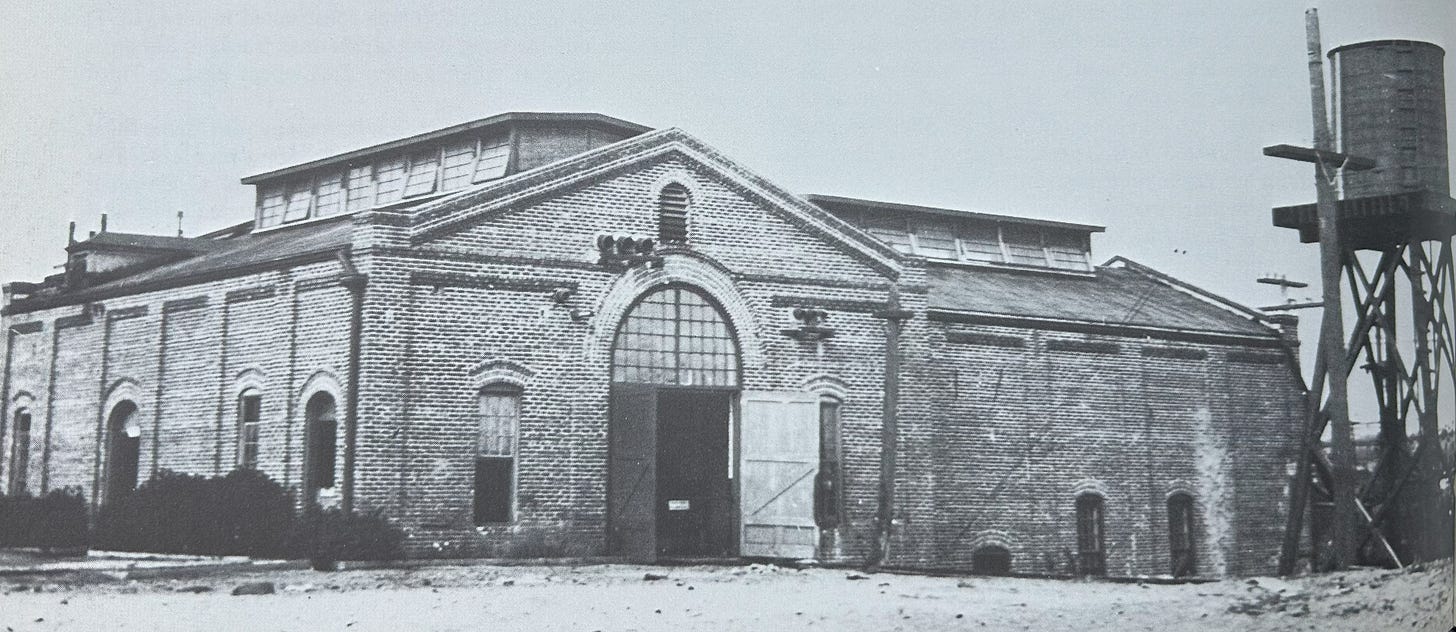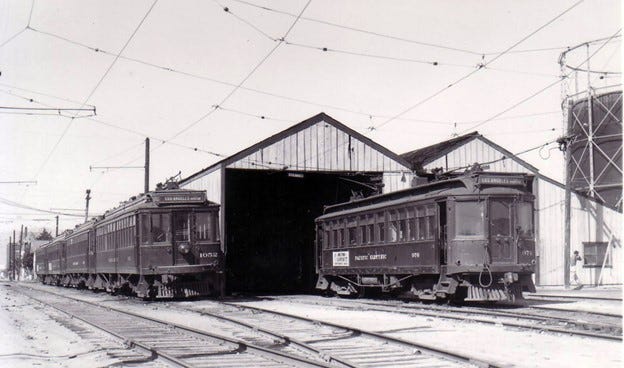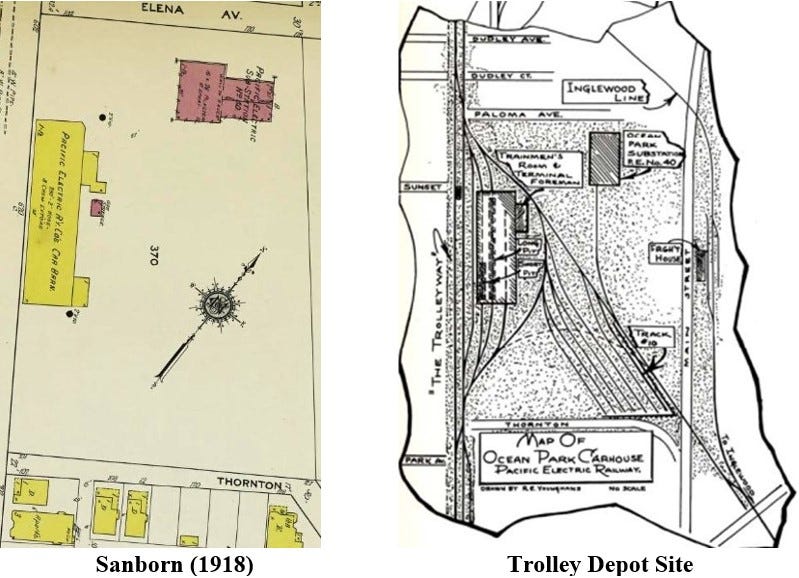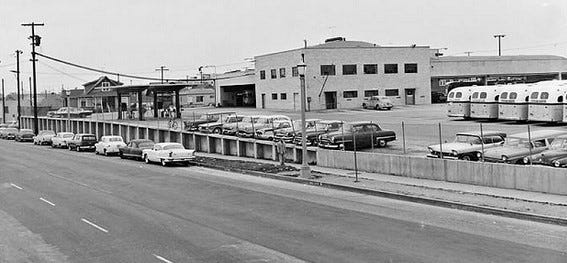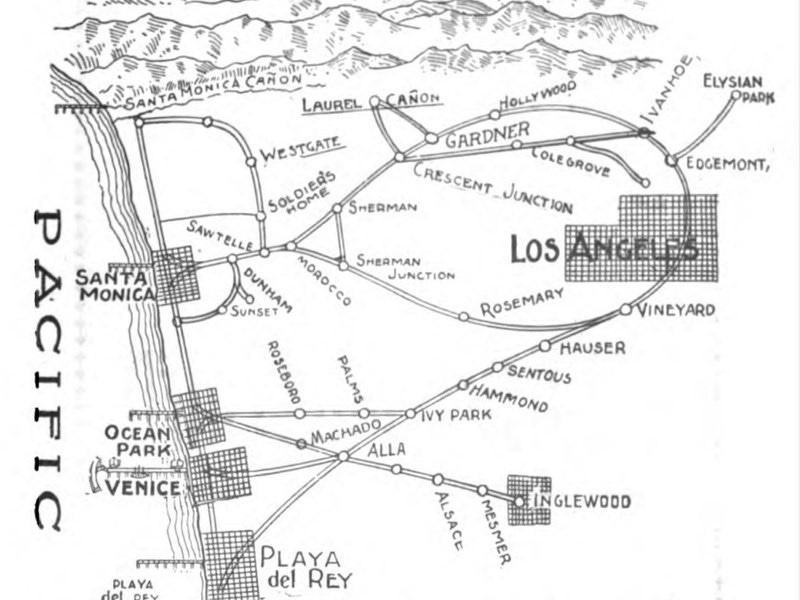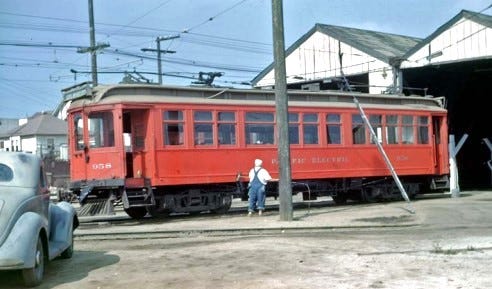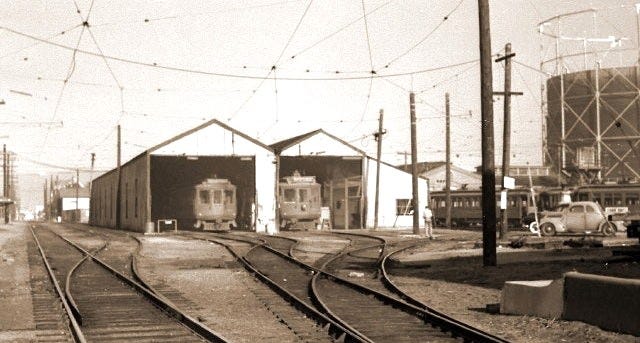We are taking an excursion this week. Going over the Santa Monica border into Venice. Past Rose Ave to the former Los Angeles-Pacific Railway electric trolley depot between Main & Pacific from Sunset to Thornton.
We don’t usually venture into Venice – but there is some possible confusion about this other “Ocean Park” power house that needs to be addressed.
In the early 1900s, Los Angeles-Pacific Railroad (LA=P) builds the electric trolley Venice Short Line from downtown Los Angeles to Venice, Ocean Park, and Santa Monica by way of Vineyard and Culver City on Venice Blvd.1
Electrical power2 for the Los Angeles-Pacific lines is provided by a steam-powered facility at Sherman (West Hollywood). Together with a boiler explosion in 1900 that cripples the Sherman plant, and with the added power needs of the new Venice Short Line, LAP builds the Ocean Park power house3 in December 1901.
As the rail system expands further, Los Angeles-Pacific builds a larger power house in September 1903 at Vineyard (at the intersection of the Venice Short Line and the Santa Monica Short Line.) Vineyard becomes the LAP's central power station - replacing both the damaged Sherman power equipment and the Ocean Park power house.
In 1904, the Ocean Park power house is reconfigured as a Los Angeles-Pacific substation (No. 40) that converts the 2400 volts AC to the 600 volts DC used by streetcar motors.
In 1901, Los Angeles-Pacific also builds the Ocean Park Car House at Sunset Avenue in Venice.4
In 1911, Los Angeles-Pacific is merged into the Pacific Electric Railway (PE). Pacific Electric continues to operate railway cars out of this location until 1950 when all the transit lines are converted to bus.5 The Ocean Park Car House is demolished in 1950 and the Ocean Park Substation (No. 40) is demolished in 1954. With the removal of the rails, nothing remains of 50 years of railway operations at the Venice site.
Street cars (trolleys / trams) run on steel rails, but unlike mechanical cable cars, street cars are propelled by onboard electric motors and require a trolley pole to draw power from an overhead wire. Far faster than any earlier form of urban transportation, the street car quickly eclipses cable cars and horse cars as America’s choice for transit in the first half of the 20th century.
The $25,000 Ocean Park power house is a brick building with four steam boiler motor-generator sets producing 3,250 kW of electrical power.
The Ocean Park trolley depot is used for rail car maintenance and overnight parking. It is not a trolley stop - the Sunset Avenue stop on Pacific is adjacent to the car house.
The gas storage tanks in the background are on the Chiat/Day Building site and not associated with the railway facility. Southern California Edison operates a manufactured gas plant (MGP) that produced gas from coal from 1905 until 1916, when the plant is sold to the Southern California Gas Co.
Work begins on the new bus yard in late 1950 and the bus yard opens in August 1951. The bus yard serves PE and then the successive companies, Metropolitan Coach Lines (MCL), Los Angeles Metropolitan Transit Authority (LAMTA), Southern California Rapid Transit District (SCRTD), and finally as Division 6 of Los Angeles County Metropolitan Transportation Authority (Metro). In December 2015 Metro officially closes the facility (Division 6).



